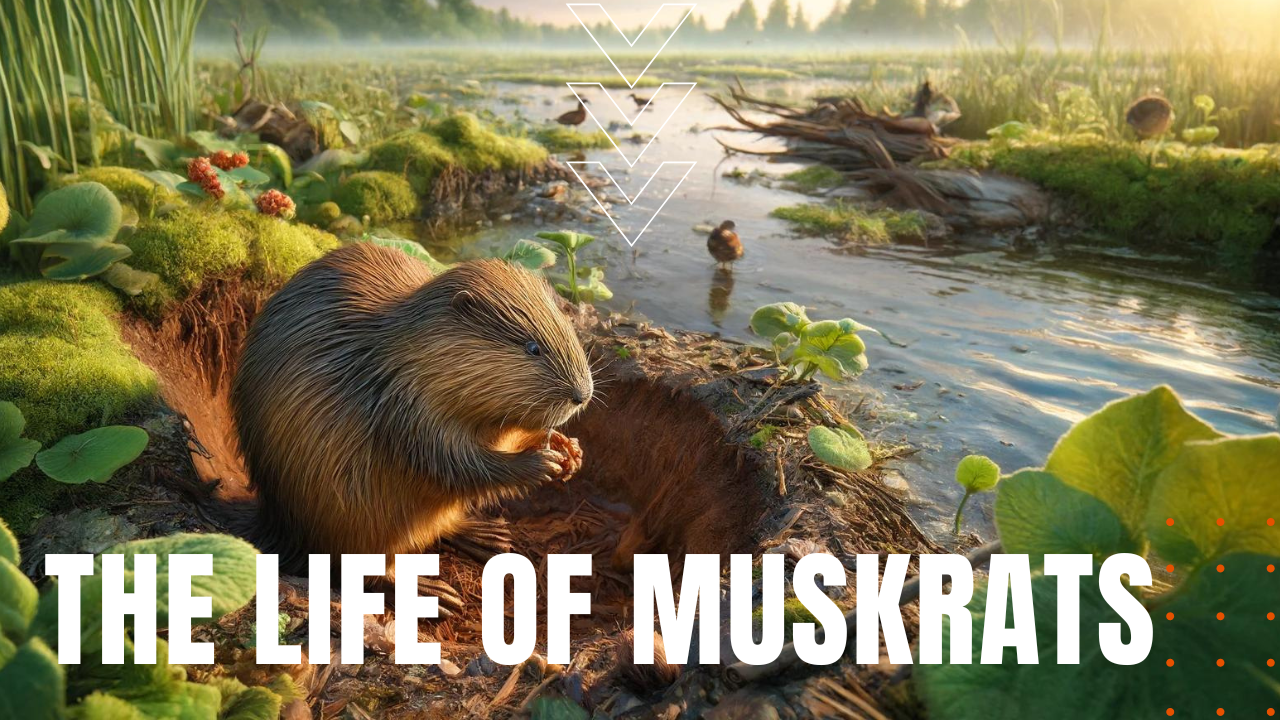The Life of Muskrats

Found in swamps, marshes and wetlands from the northern reaches of Canada to the Gulf of Mexico and the eastern border of Mexico, Muskrats or Ondatra zibethicus are so named for their territory-marking musky odor and rat-like appearance, favoring water depths of four to six feet, where they craft bank burrows or pushup dens made out of piles of vegetation built atop a sturdy foundation such as a tree stump. Muskrats possess robust bodies roughly a foot long, with flat and scaly tails that add another nine inches to their overall length.
Adept Swimmers
Of the sixteen subspecies of these voracious rodent mammals, Muskrats are adept semiaquatic swimmers whose dense fur traps a layer of air for insulation and buoyancy. Living an average three to four years in the wild and up to ten in captivity, Muskrats form large family groups marked by defined territories, and while they can hold their breath upwards of 17 minutes, Muskrats are clumsy and slow on land, compounding their vulnerability to predators due to their poor eyesight, hearing and smell, making them a choice target for mink, foxes, cougars, wolverines, bull sharks and more.
Crepuscular Omnivores
While their dry burrow dens protect them from the elements, Muskrats are crepuscular in nature, becoming active in the late afternoon and evening, while their diet is mostly plant-based, although when vegetation is in short supply, their diet can expand to eating snails, fish, frogs and shellfish, and even other Muskrats within and without their own family community. Breeding monogamously from March through August, depending on their latitude, muskrats mate while partially submerged or atop water-logged debris just above the surface, while females gestate their young for 28 to 30 days, before giving birth to an average six to seven kits per litter.
Born Altricious
Born altricious or helpless, newborn muskrats are pink, blind and hairless, opening their eyes at fourteen to sixteen days, before weaning from mother’s milk at 21 to 28 days. Introduced into Argentina and multiple European and Asian countries, Muskrats are considered an invasive species, listed as the fourth worst alien species in Europe for their damaging impact on rivers, roadways and water supplies, as well as their overconsumption of vegetation, making the life of muskrats, an industrious member of the genus ondatra.
